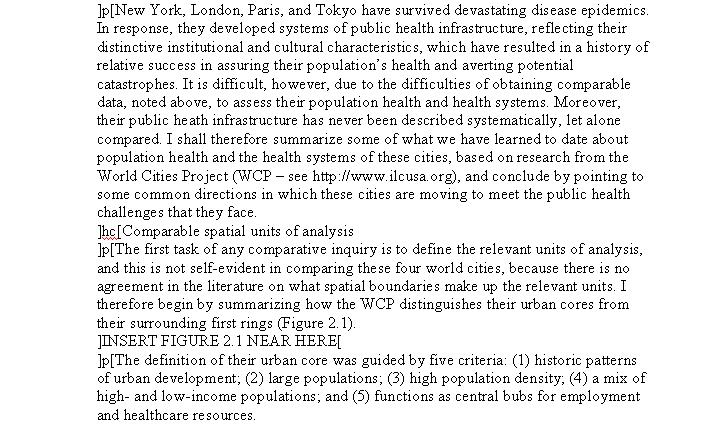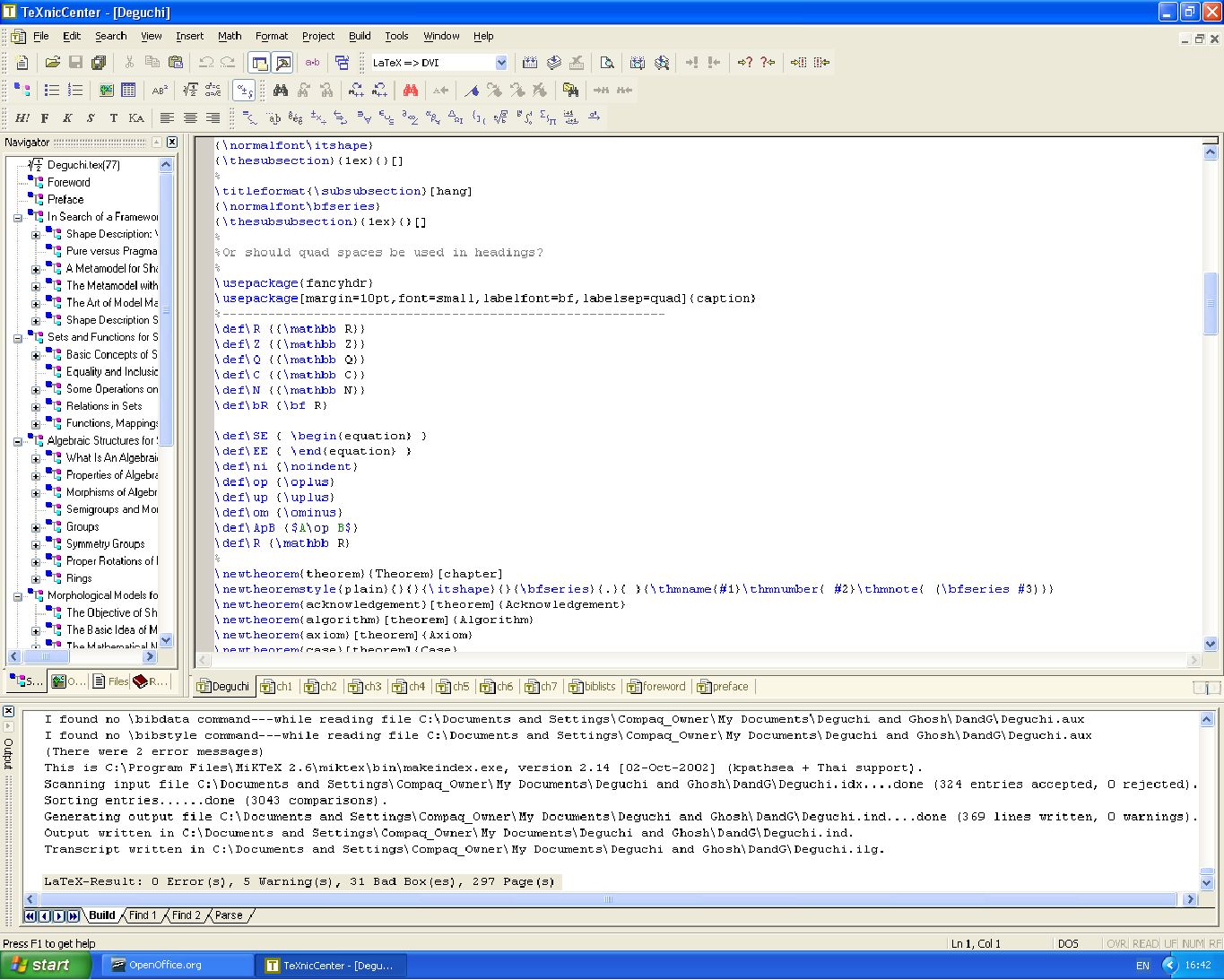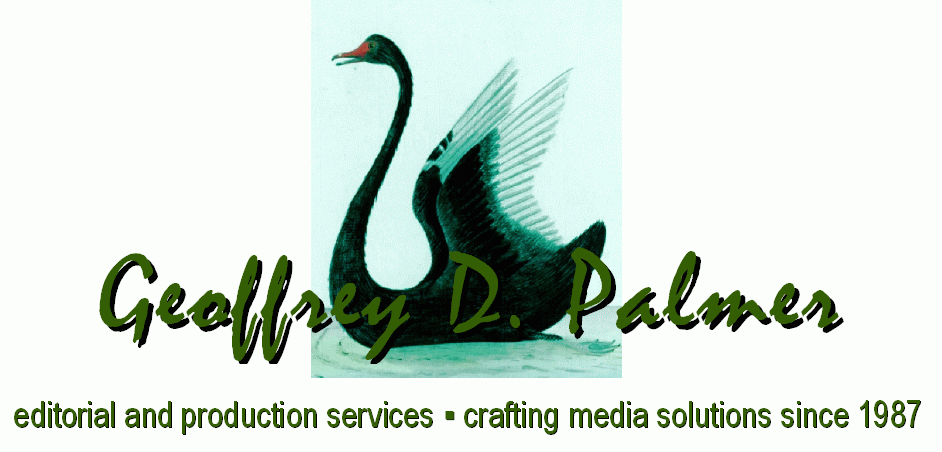Introduction
Plus ça change, plus c'est la même chose
Jean-Baptiste Alphonse Karr, Les Guêpes (The Wasps), January 1849
In the early 1970s, a copy editor in academic publishing needed little more than a red biro and a pile of reference books, and hot-metal typesetting was still the technology of choice for technical content such as mathematics. By the millennium, photosetting had come and gone, and typesetting was becoming computerised. A similar transformation has taken place at the copy-editing level: nowadays, my preference is to edit on screen, in either Microsoft Word or LaTeX. But – to echo the words of Jean-Baptiste Alphonse Karr – despite all the changes that have taken place in recent decades, the fundamental editing task remains much the same.
Whatever the medium has become, the message is unchanging: the work still requires the same attention to detail, depending always on the level of editing that is required.
I welcome projects of a highly technical and/or illustrative nature. I am happy to consider work involving language correction – subject always to prior examination of the materials. While I have experience of a very wide range of subject areas (ranging from philosophy to physics, via geography and geology), I would prefer to avoid chemistry and genetics – areas in which I consider that I have insufficient expertise.
On-screen editing in Word
The devil is in the detail
Anonymous*
The majority of my work is edited on screen in Microsoft Word, using a variety of approaches. These range from simulations of the finished typeset product (via the application of typographical styles) through generic coding methods to the bespoke template-based methods developed by individual publishing houses.

I normally track changes during editing. While it is usually best practice to return non-tracked final deliverables, I can supply tracked versions of edited files upon request.
Portfolio Selections
Iberia in Prehistory, by María Cruz Fernández Castro (Blackwell, 1995)
An Introduction to the Nature and Functions of Language, by Howard Jackson and Peter Stockwell (Stanley Thornes, 1996)
An Introduction to Text and Discourse Analysis, by Ian Pople (Stanley Thornes, 1998)
A Theory of Modernity, by Agnes Heller (Blackwell, 1999)
Angles on Environmental Psychology, by Craig Roberts and Julia Russell (Nelson Thornes, 2002)
Examining Philosophy and Ethics, by Patrick J. Clarke (Nelson Thornes, 2002)
Deduction: Introductory Symbolic Logic, by Daniel A. Bonevac (Blackwell, 2003)
Contemporary Debates in Philosophy of Science, edited by Christopher Hitchcock (Blackwell, 2004)
The Future of Global Financial Services, by Robert E. Grosse (Blackwell, 2004)
Global Assemblages, edited by Aihwa Ong and Stephen J. Collier (Blackwell, 2005)
Re-reading Popular Culture, by Joke Hermes (Blackwell, 2005)
A Companion to Urban Economics, edited by Richard Arnott and Daniel McMillen (Blackwell, 2006)
Archaeology in Practice, edited by Jane Balme and Alistair Paterson (Blackwell, 2006)
Women & Media, by Carolyn M. Byerly and Karen Ross (Blackwell, 2006)
Ethics: The Fundamentals, by Julia Driver (Blackwell, 2007)
Inside the Economist's Mind, edited by Paul A. Samuelson and William A. Barnett (Blackwell, 2007)
The Economics of Gender, 3rd edn, by Joyce P. Jacobsen (Blackwell, 2007)
The Good Representative, by Suzanne Dovi (Blackwell, 2007)
Changing Software Development, by Allan Kelly (Wiley, 2008)
International IT Regulations and Compliance, by Siri H. Segalstad (Wiley, 2008)
Networked Disease, edited by S. Harris Ali and Roger Keil (Blackwell, 2008)
The Bounds of Cognition, by Frederick Adams and Kenneth Aizawa (Wiley-Blackwell, 2008)
The Dictionary of Human Geography, 5th edn, edited by Derek Gregory, Ron Johnston, Geraldine Pratt, Michael Watts and Sarah Whatmore (Wiley-Blackwell, 2009)
Applied Digital Optics, by Bernard Kress and Patrick Meyrueis (Wiley, 2009)
Management of Acute Coronary Syndromes, by Eli Gelfand and Christopher Cannon (Wiley-Blackwell, 2009)
Improving Survey Response, by Ineke Stoop, Jaak Billiet, Achim Koch and Rory Fitzgerald (Wiley, 2010)
Introduction to Physical Hydrology, by Martin Hendriks (Oxford University Press, 2010)
What Cinema Is!, by Dudley Andrew (Wiley-Blackwell, 2010)
Energy, the Subtle Concept, by Jennifer Coopersmith (Oxford University Press, 2010)
Seven Tales of the Pendulum, by Gregory L. Baker (Oxford University Press, 2011)
Examination Paediatrics, 4th edn, by Wayne Harris (Elsevier Australia, 2011)
A Companion to Franklin D. Roosevelt, edited by William D. Pederson (Wiley-Blackwell, 2011)
Worlding Cities: Asian Experiments and the Art of Being Global, edited by Ananya Roy and Aihwa Ong (Wiley-Blackwell, 2011)
Just the Arguments: 100 of the Most Important Arguments in Western Philosophy, edited by Michael Bruce and Steven Barbone (Wiley-Blackwell, 2011)
Diagnostic Dermatology: The Illustrated Guide, Jonathan Bowling (Wiley-Blackwell, 2011)
News & Numbers, 3rd edn, Victor Cohn and Lewis Cope, with Deborah Cohn Runkle (Wiley-Blackwell, 2011)
Cancer Disparities: Causes and Evidence-Based Solutions, edited by Ronit Elk and Hope Landrine (Springer, 2011)
A New Companion to the Gothic, edited by David Punter (Wiley-Blackwell, 2011)
On-screen editing in LaTeX
A distributed system is one in which the failure of a computer you didn't even know existed can render your own computer unusable
Leslie Lamport, initial developer of LaTeX
I can edit on screen in LateX, using the MiKTeX 2.6 LateX distribution and a variety of editing programs, the most versatile probably being TeXnicCenter.

Changes cannot be tracked in TeXnicCenter, but the .tex files can be opened and compared in Microsoft Word. (On the other hand, while changes can be tracked in LyX 1.6, the information is only visible to another LyX user. The TeXnicCenter interface may look daunting compared to a WYSIWYG program, but I prefer to work with the code itself – and the present volume of LaTeX work doesn't justify investment in a proprietary program.)
For a detailed report on one particular LaTeX project, please click here.
Portfolio Selections
Mathematics of Shape Description, by Pijush K. Ghosh and Koichiro Deguchi (Wiley, 2008)
Distributed Control of Robotic Networks, by Francesco Bullo, Jorge Cortés and Sonia Martínez (Princeton University Press, 2009)
Computation and its Limits, by P. Cockshott, L. Mackenzie and G. Michaelson (Oxford University Press, 2012)
HTML editing
The first version of this website was written in basic HTML. I am now working towards updating and extending it in the direction of XHTML and MathML, using W3C's open-source Amaya editor/browser. Step one, code clean-up and conversion (under way); step two, W3C and CSS validation.
Small documents
A small document could be anything from a standard letter, a press release or promotional copy up to documentation for an academic programme or a business workflow – anything modest in size that requires editing and/or language correction. Please contact me with your requirements.
*An earlier form of this saying, 'Le bon Dieu est dans le detail' ('The good God is in the detail') is sometimes attributed to Gustave Flaubert.





 ®
® blog
blog